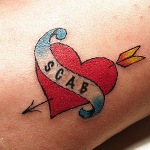
Women in Advertising
As a design graduate intending to pursue a career in creative advertising, I have in the last two years, made efforts to research and better understand the working environment I hope to enter.
89% senior creative positions within top UK agencies are occupied by men, 83% of creatives are men, yet 80% of all purchasing decisions are made by women. Creative advertising departments have historically been and remain today, heavily male dominated despite the fact yet there are significantly more women, like myself, training for creative roles than there are men. 60% of students on creative advertising, graphic design, and other art and design courses are female and yet only 30% end up as creatives in advertising. Therefore 50% of the newly qualified female creative talent is lost between graduation and permanent creative roles in advertising. Where does all this female talent go and why? The answer according to Kathryn Ellis who carried out a six year study to find ‘The Lost Girls’ is that 45% chose to work in other advertising departments such as account management, planning, and project management, whilst 34% gained offers from creative and marketing based companies and only 11% gained employment in the creative roles for which they had been specifically trained. Why this happens is less clear. Potential causes have been extensively researched and reported with reasons including conscious bias from existing senior directors who show an unwilling attitude to diversity for fear of upsetting existing key staff, an unconscious bias from male educators that leads them to prefer more masculine work, exclusion of women from social events and networking for fear of adversely affecting male enjoyment, and a lack of female role models – especially existing creative directors and female mentors. There appears to be a reluctance to promote women for fear they will end up leaving to have children and their job will have to be left open during associated maternity leave. There is a preconception that women lack confidence, assertiveness, resilience and self-promotion when compared to their male counterparts.
All the above are small behaviours and cultural biases that women encounter frequently either singularly or in combination in daily life in but in creative advertising, the perceptions initiate in education, grow in work placements and early roles to a point that becomes intolerable, resulting in talented women slowly and simply opting out. The imbalance between men and women in creative departments compromise standards of equality in our society and has social and economic implications.
Successful advertising campaigns connect with the widest range of people; men, women, black, white, straight, gay, young, old. The traditional way of coming up with ideas and concepts, involves bringing together a diverse group with diverse opinions to achieve the best result. So is it not essential to have a truly diverse workforce to have the societal equivalent of a meaningful brainstorm? If all the participants are the same gender, ethnicity, age, sexual orientation and earn the same, it would be no surprise if the result was narrow and homogenised. It would simply not make sense to brainstorm like this so why does it make sense to have a workforce lacking diversity? If our agencies are dominated by white, middle class men, is it so surprising that advertisers and brands rarely deviate from white faces to champion and front their products and services? Would the client not be better served by connecting with a more diverse market? Numerous studies indicate women feel advertisers do not understand them, and they find the majority of texts either unappealing or alienating and if the majority of creative departments are staffed by men, it follows that the majority of texts speak from a masculine perspective, and may lack insight and understanding of women Advertising texts could not just be more relevant, and hence effective, by involving women in their creation; they could also be more innovative and distinctive. Grow and Deng sum it up, “The lack of women in advertising creative departments compromises creativity itself. Thus, in the end, this is not a gender problem. This is a business problem, a problem that advertising agencies ignore at their own peril.”










